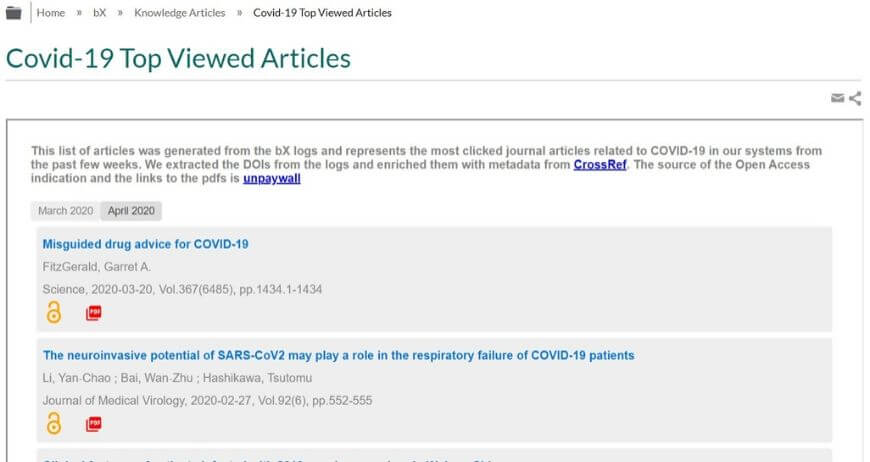The recommendations of the UK’s recent Finch report, looking into potential models for the expansion of access to the published findings of research, sparked interesting discussions about the value and philosophy of gold vs. green open access publishing.
The Finch report recommends a model whereby research findings, particularly when research is publicly-funded, should be published in open access or hybrid journals and funded by Article Processing Charges (APCs) (‘Gold OA’). In his blog, Open Access Archivangelism, Stevan Harnad, one of the outspoken critics of the Finch report recommendations, argues that this model simply puts more money, out of scarce research finds, into the coffers of the publishers in exchange for making single articles freely accessible. Harnad argues in favour of cost-free OA self-archiving of research publications (‘Green OA’).
The questions of where and how research output is published and how to achieve maximum impact are key to authors, funding agencies and institutions.
Scholarly evaluation is traditionally done by measuring citation counts in order to calculate the journal impact factor, and journals with a high impact factor are usually preferred by authors. Increasingly, other metrics are emerging that are primarily based on usage such as the number of article requests and downloads. Increasing attention is also paid to discussions that appear in social media – a key aspect, for example, in the altmetrics movement. In essence, impact cannot be measured only by scholars who publish and cite but needs also to take into account users of scholarly material.
Coming back to Open Access, there are a number of papers discussing impact of Open Access material, the bibliography of the effect of open access and downloads (‘hits’) on citation impact, published as part of the OpCit project, is a brilliant source of articles in this area. M. Riera and E. Aibar (2012), for example, conclude in their analysis of articles published in intensive care medicine “Open access publishing and the Hirsch index of the first signing author increase the impact of scientific articles”. There is also a nice graph on Matthew Cockerill’s blog about how a specific journal increased its impact after moving to Open Access. Open Access publishing has certainly grown dramatically over the past years and continues to do so. Heather Morrison provides some insights on her blog.
I did a little experiment with the bX usage data to check how usage of Open Access material is reflected in bX Hot Articles. I took the 183 top used articles in medicine and the medical subcategories as calculated by Hot Articles for May 2012 and checked how many are freely accessible as open access articles. The result – 64 (35%) are either available for free from publisher sites, institutional repositories or other Web sites. It’s quite a high percentage. It will be interesting to repeat this experiment with more data in six months.
Usage is a good measure of the impact of an article and in order to increase usage an article needs to be discoverable and accessible – ideally via the institution’s central discovery system. This, of course, brings us to Primo Central. From
the outset, Primo Central has indexed data from open access collections and from institutional repositories and continues to do so. Just recently we reached agreements with several institutions to make their repositories globally discoverable via Primo Central. Primo Central also indexes an increasing number of open access articles available in hybrid journals that contain both free and for-fee articles, and enables access to such open access material not only to subscribing institutions but to all users. As a result, a significant number of these articles are now reaching the wider audience for which they were intended. Exciting times!
the outset, Primo Central has indexed data from open access collections and from institutional repositories and continues to do so. Just recently we reached agreements with several institutions to make their repositories globally discoverable via Primo Central. Primo Central also indexes an increasing number of open access articles available in hybrid journals that contain both free and for-fee articles, and enables access to such open access material not only to subscribing institutions but to all users. As a result, a significant number of these articles are now reaching the wider audience for which they were intended. Exciting times!
You might also be interested in

bX
COVID-19
Librarianship
Library Discovery
Research
May 14, 2020 |
2 min read
What COVID-19 Articles did Patrons Access? A List of Top Viewed Articles
Primo
Summon
bX
Library Discovery
September 22, 2016 |
5 min read
Library Exploration through Serendipitous Discovery
Alma
Primo
bX
Library Discovery
December 08, 2014 |
2 min read
The Open University (UK) selects Ex Libris Alma and Primo
Great library experiences start with software
Download whitepaper
Primo
bX
Library Discovery
December 12, 2012 |
6 min read
Altmetrics on Primo
bX
October 01, 2012 |
4 min read
From the bX data lab: Topic visualization and usage data
Primo
bX
Library Discovery
July 05, 2012 |
4 min read
Serendipity, discovery and bX
bX
August 06, 2010 |
2 min read
August’s Dog Days
SFX
bX
August 07, 2009 |
2 min read
Customers Review of Ex Libris New Service, bX

